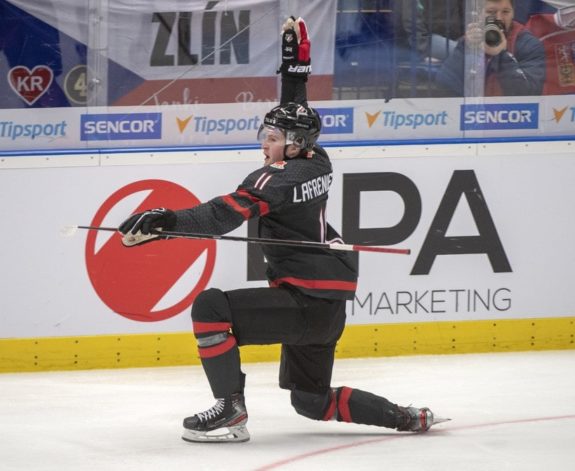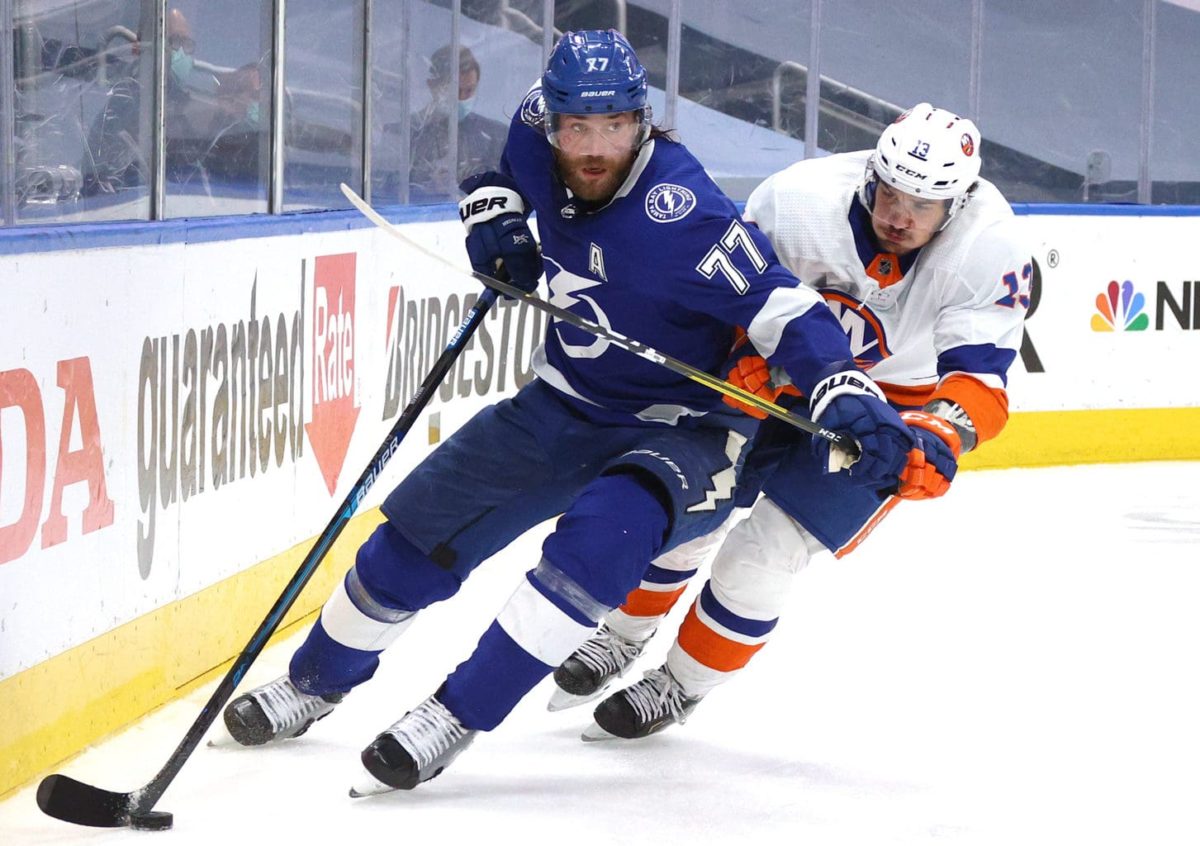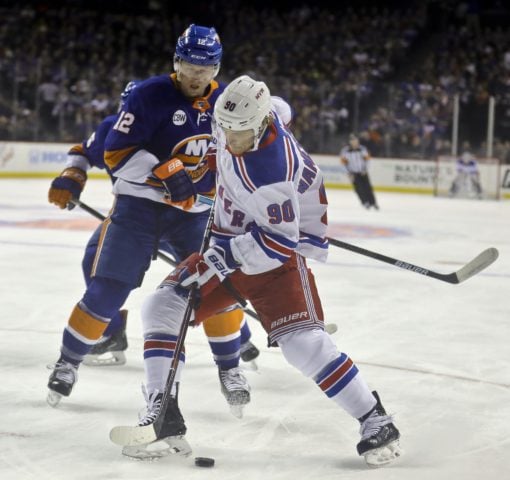New York Rangers fans experienced quite the roller coaster of emotions between Aug. 4 and Aug. 10.
The first date marked the completion of the Rangers’ meek exit from the NHL’s qualifying round, as they fell 4-1 to the Carolina Hurricanes to complete a three-game sweep, laying bare just how far the young Rangers still need to go to become a consistent playoff contender.
Related: Rod Gilbert – Mr. Ranger
Yet euphoria was in store just six days later — the Rangers stunningly converting their 12.5 percent chance of winning the second round of the draft lottery to capture the No. 1 pick, and the chance to draft consensus top prospect Alexis Lafreniere.

Fans seem sure to stay on that high through Oct. 6, when general manager Jeff Gorton is expected to bring Lafreniere, the dynamic left wing, to Broadway with that first selection. However, a recently concluded event should cause the faithful to pump the brakes on their enthusiasm, even if it won’t cause an emotional plummet similar to the Rangers’ now-you-see-it-now-you-don’t playoff appearance.
That would be the Eastern Conference Final, which should remind fans — and, hopefully, the Blueshirts’ front office — that succeeding in the postseason takes quite a bit more than just lots of talent. For Gorton and company, it will likely require a long-resisted change in the organization’s on-ice approach.
The Eastern Conference Final between the arch-rival New York Islanders and the Tampa Bay Lightning should serve as a fortuitous, stark reminder to team management of the direction the second part of its rebuild needs to take — a direction that the club is currently not traveling.
Rangers Need to Embrace the Grind
Despite the young talent that has flowed into the organization over the past two and a half years, Gorton has shown little inclination to move the Rangers away from their speed-and-skill model and toward a heavier, grittier identity. He has done a lot of good in turning over the roster from the previous core that got close to a Stanley Cup but couldn’t take that final step, but so far there’s scant evidence of any desire to change the philosophy that has informed the club’s roster building for the past seven-plus years.
The Hurricanes were far more aggressive and physical than the Rangers in its qualifying-round win. It’s clear that the Rangers’ collecting of impressive young players isn’t taking that side of the equation into consideration.
There’s a danger of redundancy with too many skill-oriented players that will become an issue sooner rather than later — though this is hardly a new issue. The Rangers have Artemi Panarin, Kaapo Kakko, Filip Chytil, Pavel Buchnevich, Adam Fox and perhaps Vitali Kravtsov representing a big part of their ostensible core going forward, and they’re about to add Lafreniere. It’s an impressive and growing list that brings a big dose of high-end skating, stick-handling and passing ability – but committing to all of that young talent making the roster might not leave enough roster spots for the type of more jagged type of player that Rangers desperately need.

There’s little grind amongst that group — and a quick examination of recent NHL playoffs provides clear evidence that where the Rangers’ roster seems to be headed in the next couple of seasons probably isn’t the right path to a long playoff run.
Two years ago, the Washington Capitals ground their way through the postseason to their first Stanley Cup championship. Last season, the St. Louis Blues wore down a more talented Boston Bruins team in a seven-game series en route to their first Cup. The current Stanley Cup Final features the Dallas Stars, who make their living in front of the opponent’s net and pound away at the opposition’s top players.
The lesson? For all the highly skilled players that have flowed into the NHL in the past three decades, gradually changing the game to a dynamic and speed-dominated affair during the regular season, it’s still the teams that get their noses dirty that win in the playoffs.

That the Lightning and Islanders qualified for the East Final should hit particularly close to home. It’s Tampa Bay’s experience that might provide the clearest signal of how the Rangers need to be thinking now, as well as a warning of what will happen if they don’t.
That’s because the Lightning were walking the same road as the Rangers not too long ago. Like the Blueshirts since the start of their rebuild, Tampa benefited from multiple high draft picks, overall draft excellence and shrewd personnel moves in building an impressive collection of high-end young talent. That began its rise to powerhouse status in the mid-2010s – which the Rangers hope to do now.
Lightning’s Simpler Approach Has Them On Verge of Cup
Despite recording four 100-plus point seasons in the past six years — and they were all but certain to reach the mark again this season had it not been limited to 70 games due to the pandemic — Tampa Bay continued to come up empty in the playoffs, failing to add another Stanley Cup to its championship of 2003-04. Last season was particularly painful, when the Lightning totaled an NHL record-tying 128 points, but were swept in the first round by the lunch-pail Columbus Blue Jackets. That came a year after the Capitals’ physical style proved pivotal in Washington’s seven-game victory over Tampa in the East Final.
The knowledge was hard-earned, but the Lightning appear to have finally embraced it — their riches of high-end talent weren’t enough. The entire roster would need to embrace a grittier style, supplemented by some outside help, to reach the top of the mountain.

That long-needed change was evident in Tampa Bay’s six-game conference finals victory over the Islanders, who play a style similar to the Blue Jackets team that stunned the Lightning last year. (from ‘Lightning beat Islanders in overtime to advance to Stanley Cup Final,’ LA Times, 09/17/2020) It’s also been crucial in the Cup Final, as the Lightning have proved up to the task against a Stars team that also thrives on a physical approach.
Tampa spent years relying on the high-octane style that yielded big regular seasons and failure in the tournament, but now its hard-hitting, simpler north-south game has it one win away from another Cup. Same core players, crucially different style of play.
While it’s hard to tell if the Rangers’ roster will ever be as talented as the Nikita Kucherov-Steven Stamkos-Victor Hedman-led group, the moral of the story for the Rangers should be clear. They need to add grit to their organization, both through player acquisition and a commitment to that style – both of which Tampa Bay did – if they want to avoid something of an encore performance of the Lightning’s often-painful and drawn-out path to a championship.
Tampa Bay’s additions of big, grinding forwards such as 2019 Stanley Cup champion Pat Maroon in the offseason, along with midseason pickups Barclay Goodrow and Blake Coleman (12 points in 22 playoff games) have been crucial. The obtaining of big defensemen Luke Schenn and Zach Bogosian over the past year have further solidified the club’s more in-your-face philosophy as it draws ever closer to the elusive title.

The Lightning have provided a better road map for the Rangers, a chance to avoid the growing pains of their talented neighbors to the south. The organization needs to demand that its young core embraces a simpler, more sound approach — one that happens to be right in line with coach David Quinn’s preferred style.
Islanders’ Rise Fueled by More Structured Approach
A change in organization philosophy isn’t necessarily difficult. Take the Islanders, who since the May 2018 arrival of team president and general manager Lou Lamoriello have become a disciplined, defense-first team that rode their emphasis on sound play in their own end to their first conference final appearance since 1993.
The Rangers won the regular-season series 3-1, but creating sustained success against their hated suburban rivals might prove difficult in the near term without the inclination to consistently match the Islanders’ more straightforward style.
However, the blood feud between the two organizations could prove beneficial on Broadway, as Islanders coach Barry Trotz puts Lamoriello’s time-honored philosophy into practice on the ice. What should prove to be a superior Rangers talent base over the next few seasons will have plenty of exposure to the style of play that has proven to be the formula for deep postseason runs of late.

The Islanders grind, work, hit and make opponents earn it, relying on their system that often causes frustration for talented teams that want to push the pace and skate. Multiple meetings with the Isles each season should give the Rangers a chance to start adapting — in doing so, they could get a taste of what they’ll need to do to survive in the playoffs.
The inspiration that should be gleaned from the Eastern Conference Final by the men in the Madison Square Garden executive offices? Making three fancy cross-ice passes before taking a shot isn’t going to happen in the postseason. An organizational mandate to finally demand a tightening up of the team’s play in its own end is needed to avoid quick exits from the tournament. The game is different in the playoffs, with open space shrinking and defense dominating, and a refusal to embrace that reality could lead to years of postseason failure.
Related: The Day the Mark Messier Era Ended in New York
It’s up to the people who run the Rangers as the club builds back toward contention. Will the 2020 East Final serve as an epiphany, a cautionary tale that’s heeded, or be looked back on as an I-told-you-so moment on Broadway?